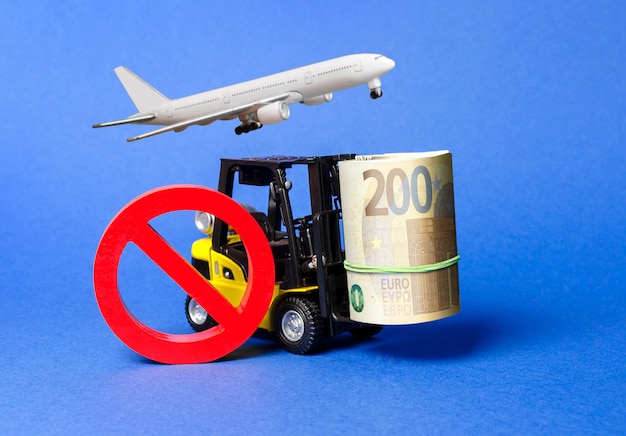Quick Read
Drugs, Inc. – An In-Depth Look into the Complex World of Illegal Substances
Drugs, Inc. is a thought-provoking and enthralling documentary series that delves deep into the intricate world of illegal substances. Produced by National Geographic, this show offers viewers an unprecedented insight into the production, distribution, and consequences of various drugs that have long plagued societies around the world.
Exploring the Dark Side
Each episode in this series focuses on a different drug, providing viewers with a comprehensive understanding of its origins, manufacturing processes, and the far-reaching impact it has on individuals, families, and communities. From the opium poppy fields of Afghanistan to the cocaine cartels in Colombia, this series leaves no stone unturned.
Impact on Communities
The documentary doesn’t just focus on the production and distribution of these substances; it also sheds light on their devastating effects. We see how families are torn apart, communities destroyed, and lives ruined due to addiction. The series does not shy away from depicting the harsh realities of drug use, making it a powerful tool for education and awareness.
Undercover Operations
One unique aspect of Drugs, Inc. is the use of undercover footage. Cameras follow law enforcement officers as they infiltrate drug rings and expose their operations. This provides a raw, unfiltered look at the dangerous world of drugs and the lengths to which some will go to profit from it.
Global Perspective
This series provides a global perspective on the drug trade, highlighting how interconnected our world has become. We see how drugs produced in one part of the world end up on streets thousands of miles away. Drugs, Inc. serves as a reminder that no matter where you live, the issue of illegal substances is one that affects us all.
Educational and Informative
Drugs, Inc. is not just entertaining; it’s also educational. It provides viewers with valuable information about the drugs that are commonly used and abused today. By demystifying the production, distribution, and consequences of these substances, it empowers viewers to make informed decisions about their own lives and the lives of those around them.

Drugs, Inc.: An In-depth Exploration into the Illegal Drug Trade
Drugs, Inc. is a compelling documentary series produced by Tremendum Films and distributed by the National Geographic Channel. This thought-provoking program delves deep into the intricate world of illegal drugs, offering viewers an extensive understanding of various aspects of the drug trade, from its production and distribution to its devastating consequences.
Production Company: Tremendum Films
Tremendum Films, an accomplished production company based in New York City, brings this riveting series to life. Known for their compelling storytelling and dedication to shedding light on complex social issues, Tremendum Films masterfully navigates the often dangerous and uncharted waters of the drug world.
Distributor: National Geographic Channel
The National Geographic Channel, a renowned name in the world of documentaries and educational programming, serves as the platform for sharing this important series with the global audience. With a commitment to exploring the wonders of our world and bringing vital stories to light, National Geographic Channel provides a trusted and esteemed home for Drugs, Inc.
Statement of Purpose and Scope
The primary objective of Drugs, Inc. is to provide an in-depth exploration into the complex world of illegal drugs and their impact on society. This series aims to expose viewers to the harsh realities and consequences of drug addiction, while offering a comprehensive look at the various aspects of the drug trade. It is essential to emphasize that this outline does not condone or promote the use of illegal drugs, but rather aims to shed light on the subject matter for educational and informative purposes.
Background: The Global Drug Trade
Overview of the global drug trade and its economic impact: With an estimated approximate market value of $400 billion according to the United Nations Office on Drugs and Crime (UNODC) report in 2016, the global drug trade is a significant industry that continues to pose challenges for international law enforcement and public health agencies. This illicit market caters to the demand for various substances, including opioids like heroin and prescription painkillers, stimulants such as cocaine and methamphetamine, cannabis, and new psychoactive substances (NPS). The production, trafficking, and consumption of these drugs span across various regions of the world.
Historical context: Prohibition era and the rise of organized crime
19th-20th century drug laws: The emergence of strict drug laws during the late 1800s and early 1900s in response to concerns over public health and moral decay marked the beginning of the global drug trade as we know it today. The infamous “Harrison Narcotics Act” in 1914, enacted in the United States, imposed extensive regulations on opioids and set the stage for the rise of organized crime groups involved in drug trafficking.
The role of organized crime in drug trafficking:
Organized crime syndicates, capitalizing on the prohibition era, saw an opportunity to profit from the illicit drug trade. As drug production and distribution shifted away from legitimate channels, these groups established sophisticated networks and methods for importing, manufacturing, and distributing drugs on a global scale. This historical context laid the foundation for the complex and intricate nature of drug trafficking organizations today.
Current trends and challenges in the global drug trade:
Increasing use of technology and innovation: In today’s digital age, the global drug trade continues to evolve with the adoption of advanced technologies and innovative methods. Cybercrimes such as money laundering, identity theft, and darknet markets have become integral components of drug trafficking operations. Moreover, the use of encryption techniques, anonymizing networks, and cryptocurrencies enables traders to conduct transactions with greater impunity.
The influence of cartels and trafficking networks:
Organized crime groups, including powerful drug cartels like the Sinaloa Cartel in Mexico and the Golden Triangle cartels in Southeast Asia, continue to play a significant role in the global drug trade. These organizations utilize sophisticated methods to evade law enforcement and maintain control over their operations. Furthermore, the involvement of transnational organized crime syndicates has led to an intricate web of interconnected criminal networks that span across continents.

I Drug Production
Cultivation:
Opium poppy
Opium poppy cultivation is a significant aspect of drug production in countries like Afghanistan, Myanmar, and Mexico. Traditional farming methods involve planting seeds, tending to the plants, and harvesting the pods once they have matured. However, modern industrial methods employ larger-scale farming practices, including the use of heavy machinery and synthetic fertilizers.
Risks and challenges: In regions riddled with war and political instability, poppy cultivation poses significant risks for farmers. Moreover, international efforts to eradicate illicit opium poppy fields remain a constant threat. In Afghanistan, for instance, the Taliban have used opium cultivation as a source of revenue and control over rural populations.
Coca plant
Coca leaf cultivation is prevalent in countries like Colombia and Peru. Traditional methods consist of planting, tending to the crops, and harvesting the leaves. Modern industrial practices often involve larger-scale cultivation using heavy machinery and synthetic inputs. However, risks and challenges persist, including government crackdowns on drug production, competition among cartels, and environmental concerns.
Marijuana
Marijuana cultivation is prominent in countries like Mexico and the United States. The methods used vary from indoor growing techniques employing artificial light to outdoor cultivation under natural conditions. Despite these differences, law enforcement pressure and competition among growers pose significant risks for those involved in marijuana production.
Manufacturing:
Opium poppy to heroin production
The transformation of opium poppy into heroin involves several stages: the extraction of morphine, conversion to heroin, and purification and packaging. This process is labor-intensive and poses significant risks, including the potential for exposure to toxic chemicals used in the refinement process.
Coca leaf to cocaine production
The conversion of coca leaves into cocaine hydrochloride involves extracting the alkaloids, converting them to cocaine base, and then purifying and packaging the final product. This process requires specialized knowledge and resources, making it an attractive target for law enforcement.
Laboratory production: Synthetic drugs (methamphetamine, ecstasy)
Precursor chemicals and manufacturing processes are crucial elements in the production of synthetic drugs like methamphetamine and ecstasy. The risks associated with this form of drug production are substantial, as the process requires the manipulation of potentially hazardous chemicals and carries a high risk of accidental explosions or exposure to toxic substances. Moreover, law enforcement agencies have stepped up their efforts to target and dismantle clandestine laboratories.
Impacts of drug production on local communities
Economic benefits: Drug production can create employment opportunities and generate income for local populations, particularly in areas where legal economic alternatives are scarce. However, the social issues that arise from drug production can be profound, including displacement, violence, and environmental degradation.

Drug Distribution
Transportation: From Production Sites to Markets
- Methods:
- Land:
- Air:
- Sea:
- Employment of mules and couriers:
Transportation through trucks, cars, and buses. Hidden compartments are commonly used for concealing drugs in these vehicles.
Drugs are often transported via airplanes, which require larger quantities and more complex logistics. Planes may be chartered or hijacked, while pilots and crew members can serve as mules.
Ships are used to transport large quantities of drugs, particularly between continents. Containerization is a common method for concealing drugs aboard vessels.
Individuals who transport drugs for short distances, usually on their person or in their luggage. They may be paid a flat fee or a percentage of the drug’s value.
- Interdiction efforts:
- Cartel rivalries:
- Corruption:
Law enforcement agencies and international organizations work to intercept drug shipments, using intelligence gathering, surveillance technology, and informants.
Competition between drug trafficking organizations can lead to violent confrontations and turf wars, as well as the targeting of rival groups and their associates.
Police, customs officials, and other government agents may be bribed or coerced to allow the passage of drug shipments or turn a blind eye to their activities.
Wholesale Markets and Retail Sales
B.Wholesale markets:
- Hubs of drug trading activity:
Cities such as Bangkok, New York, and Amsterdam are known for their thriving wholesale drug markets. These markets serve as key distribution centers, with drugs transported from production sites to be sold in bulk to retailers and other intermediaries.
- Role of middlemen and brokers:
Middlemen and brokers act as intermediaries, purchasing drugs from producers or wholesalers and selling them to retailers or consumers. They may also provide various services such as transportation, storage, and protection.
- Competition:
- Law enforcement pressure:
- Violence:
The wholesale drug market is highly competitive, with various organizations and individuals vying for market share. Price wars and violent confrontations can occur as a result of this competition.
Police raids and investigations are common in wholesale drug markets, making it essential for participants to maintain a low profile and employ various security measures.
Wholesale drug markets can be volatile, with violent confrontations between rival groups or disputes over drug quantities and prices.
B.Retail sales:
Distribution methods:
- Face-to-face sales:
Street-level dealers sell drugs directly to consumers, often in public areas or through discreet means.
Dealers may also use mail services, darknet markets, or other methods to reach consumers without directly interacting with them.
Risks and challenges:
- Competition:
Retail drug sales can be highly competitive, with dealers seeking to gain customers and expand their territory. This competition may result in price wars or violent confrontations between dealers.
Retail drug dealers face the constant threat of police raids, arrests, and surveillance. They must employ various security measures to avoid detection and protect their supply.
Retail drug sales can be dangerous for both dealers and consumers, with the potential for violent confrontations, robberies, or drug-related health issues.
Drug Use and Consequences
Prevalence and trends in drug use
Drug use remains a significant public health issue worldwide. Some of the most commonly used drugs include Marijuana, cocaine, and opioids such as heroin and prescription painkillers. Emerging trends in drug use include the use of synthetic drugs, designer drugs, and new psychoactive substances. According to the United Nations Office on Drugs and Crime, an estimated 275 million people, or about 5.6% of the global population, used drugs at least once in 2018.
Physical and psychological effects of drug use
Short-term:
The short-term effects of drug use can include euphoria, hallucinations, paranoia, and addiction. Users may also experience withdrawal symptoms when they stop using the drug. Some drugs can cause long-term damage to organs, mental health issues, and social problems.
Long-term:
Damage to organs
- Liver damage from alcohol and certain drugs
- Brain damage from repeated use of drugs like cocaine and methamphetamine
- Heart disease from intravenous drug use
Mental health issues:
- Anxiety and depression
- Schizophrenia and other psychoses in chronic users of cannabis
- Impaired cognitive function
Social problems:
- Broken families and relationships
- Crime, poverty, and homelessness
Consequences of drug use on individuals, families, and communities
Health-related consequences:
Drug use can lead to various health problems, including diseases such as HIV/AIDS and Hepatitis C from intravenous drug use. Overdoses are also a significant concern, with opioids being the leading cause of accidental deaths in the United States.
Social consequences:
Drug use can have far-reaching social consequences, including increased crime, poverty, and homelessness. Families and relationships are often damaged by drug use, leading to broken homes and emotional distress.
Economic consequences:
Drug use can also have significant economic consequences, including loss of productivity due to substance abuse and increased healthcare costs. The decreased workforce capacity due to drug use can have long-term effects on communities and economies.
VI. Law Enforcement and Policy Responses
Domestic law enforcement responses:
Targeting drug production, distribution, and use is a critical aspect of domestic law enforcement responses. Governments employ various strategies to combat illicit drug production, distribution, and use.
International cooperation and intelligence sharing
International partnerships play a significant role in strengthening domestic drug control efforts. Cooperation among law enforcement agencies and intelligence sharing between countries are essential tools to disrupt transnational drug trafficking networks. Information exchange can help identify key players, routes, and methods used by criminals, enabling effective interdiction.
Technology and innovation in drug detection and interdiction
Advancements in technology have significantly impacted drug detection and interdiction. The use of advanced scanning equipment, satellite imagery, and real-time intelligence can help identify drug trafficking activities and prevent the illegal trade from crossing borders. Furthermore, innovations such as biometric identification and predictive analytics can assist law enforcement in targeting high-risk individuals and preventing drug-related crimes.
Global policy responses:
Harm reduction, alternative development, and drug legalization/decriminalization efforts are significant aspects of global policy responses to drugs. These approaches aim to mitigate the negative consequences of drug use and reduce the burden on law enforcement.
Success stories: Portugal, Switzerland, and the Netherlands
Some countries have implemented innovative policies with remarkable success. For instance, Portugal decriminalized all drugs in 2001 and has since seen a significant decrease in drug-related deaths, HIV infections, and overall drug use. Similarly, Switzerland‘s heroin-assisted treatment programs have helped reduce the number of drug-related deaths and improve public health. The Netherlands‘s tolerant approach to soft drugs, such as cannabis, has led to a thriving legal market and reduced drug-related crime.
Challenges and ongoing debates:
Despite these success stories, political opposition, resistance from traditional law enforcement agencies, and ethical concerns continue to be major challenges for drug policy reforms. Some argue that decriminalization or legalization may send the wrong message to society, particularly to young people. Additionally, law enforcement agencies that have traditionally relied on drug control as a primary focus may resist these changes. Ethical debates around the potential health risks and societal costs of drug use also influence policy discussions.

Conclusion
Drugs, Inc. documentary series sheds light on the complex and multifaceted issue of drug use and its societal implications. The series exposes viewers to various perspectives, including those of law enforcement officers, drug users, policymakers, and experts in the field (link).
Summary of Key Insights and Takeaways
Some key insights from the series include:
- Drug use is a global issue: The series highlights drug problems in different parts of the world, including North America, South America, and Asia.
- The war on drugs has its limitations: The series shows that the traditional approach to drug control through law enforcement alone has significant limitations and may not effectively address the root causes of drug use.
- Drug users are individuals with complex needs: The series challenges stereotypes about drug users and shows that they have unique experiences, needs, and strengths.
- There are alternatives to a punitive approach: The series explores harm reduction strategies such as needle exchange programs and alternative development initiatives that prioritize health, social support, and economic opportunities for drug users.
The Need for a Comprehensive and Evidence-Based Approach to Drug Policy
Given the complexities of drug use and its societal implications, it is essential to adopt a comprehensive and evidence-based approach to drug policy.
Harm Reduction and Alternative Development Strategies
One such approach includes harm reduction strategies that aim to reduce the harms associated with drug use. These include needle exchange programs, opioid substitution therapy, and overdose prevention education (link). Another approach is alternative development strategies, which focus on providing economic opportunities and social support to individuals in drug-producing areas to reduce their incentives to engage in illicit drug production and trafficking.
Evidence-Based Interventions: Treatment, Education, and Social Support
Moreover, evidence-based interventions such as treatment, education, and social support can help individuals overcome drug addiction and reintegrate into society. For example, drug treatment programs have been shown to be effective in reducing drug use and improving health outcomes (link). Education and social support can help reduce stigma, increase awareness of drug use and its consequences, and provide individuals with the skills they need to succeed in life.
Encouraging Ongoing Discussions about Drug Policy
As the Drugs, Inc. series demonstrates, drug policy is an essential issue that affects individuals, communities, and societies worldwide. It is crucial that we continue to engage in ongoing discussions about drug policy and its implications. By adopting a comprehensive, evidence-based approach that prioritizes harm reduction, alternative development strategies, treatment, education, and social support, we can create a world where drug use is no longer a source of harm and suffering but rather an opportunity for personal growth and societal transformation.


